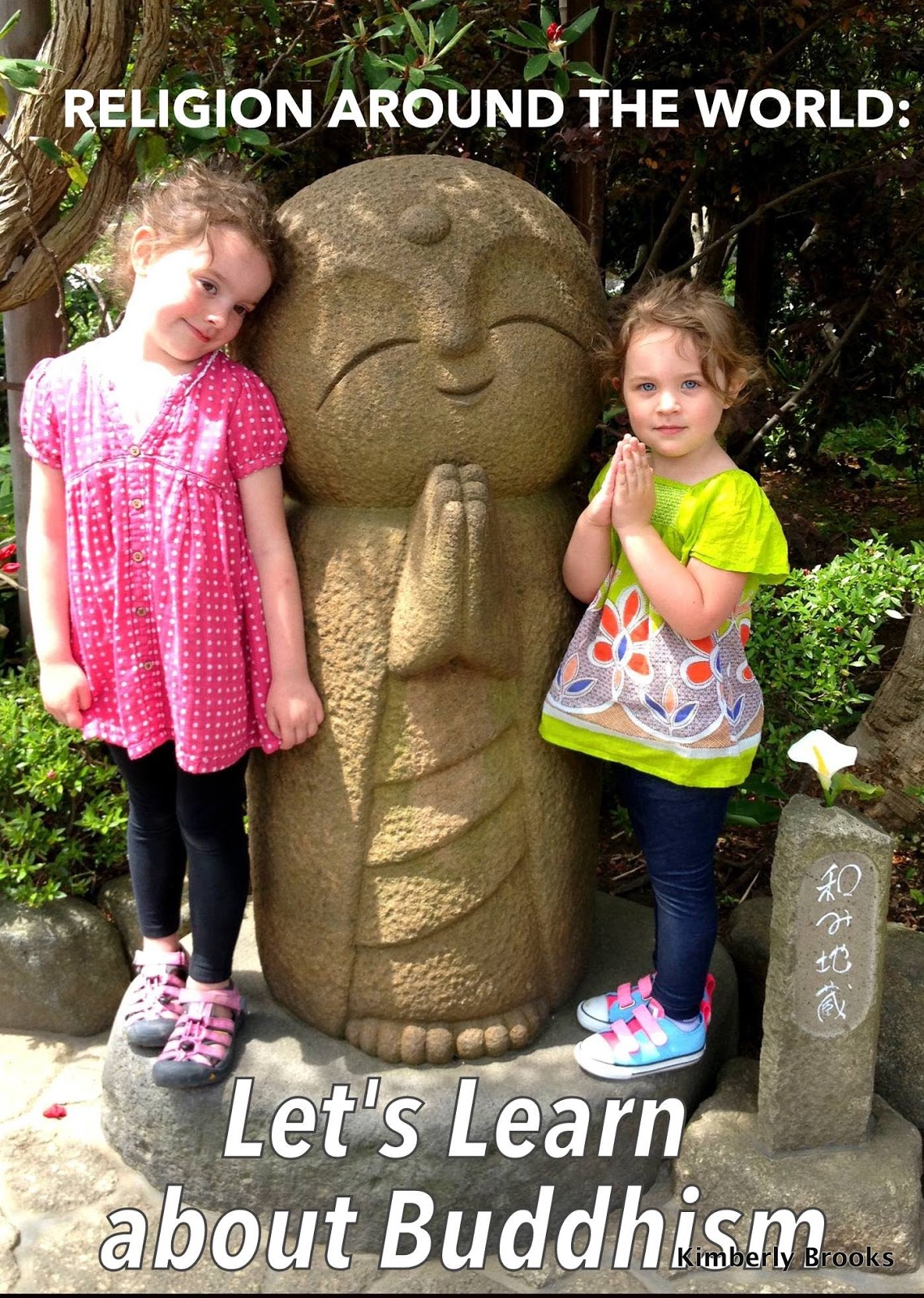My eldest daughter is a Daisy in Girl Scouts. She loves getting new pins and petals for her uniform, and one interesting pin she worked on recently was the "My Promise, My Faith" pin. I knew she would probably want this pin, but I was wary of what it might require. We identify best with Unitarian Universalism, and since there is no UU church on our military base (or in our area at all), we have not talked with our children about "what we are" or "aren't." We try our best to live our ideals and convictions, and have never felt as though we needed to point out what might make us different from others of different religious backgrounds.
So, when I looked up information about what would be required for this pin, here's what I found:
- Choose one line from the Girl Scout law. Find a story, song, or poem from your faith with the same ideas. Talk with your family or friends about what the line of the Law, and the story, song, or poem have in common.
- Find a woman in your own or another faith community. Ask her how she tries to use the line of the Law in her life.
- Gather three inspirational quotes by women that fit with that line of the Law. Put them where you can see them every day!
- Make something to remind you of what you've learned. It might be a drawing, painting or poster. You could also make up a story, or a skit.
- Keep the connection strong. Find out if your faith community offers a recognition program for Girl Scouts. Talk with your friends, family, or faith community about what you've learned about your faith and Girl Scouting. Ask them to help you live the Law and your faith.
And here's what we ended up with:
When we began to look for ideas for our poster, I was at a loss. Unitarian Universalism pulls from all religious traditions, believing there is truth to be found within each one. And there is no creed within Unitarian Universalism that members must believe in order to be considered a UU. When we looked at some of the other troop members' work and ideas (posted within our troop's FB page), every single one of them was doing a Christian project and was using a Bible story for the basis of their project. We could have used a Bible story too, but I wanted to do something different.
I also realized very early on in our project that this would demand quite a bit of help from me. I am a passionate advocate for educating children about other religions, and we have several books around our house that teach our girls about religions, the Bible, and concepts of God. I was quite surprised, then, at how difficult it was for me to describe the idea of "faith" to my 5-year-old. We have always talked about our beliefs as simply that - our beliefs and ideas - and I felt as though discussing with her how we would do a project to tell everyone about our "faith" added a new dimension to "our beliefs." It was the first time I had discussed with her the different labels that people have, and that we would be labeled too. It felt like I was adding complexity to something that previously been just another part of our lives. Does that make any sense?
Anyway... here's how we assembled our poster and tackled this project:
- We choose the line "Honest and Fair" from the Girl Scout Law. Like I said, most other girls from her troop found a Bible story to use in conjunction with their chosen line from the Law. We decided to use a story from a book we have titled "Buddha at Bedtime." It was the story of "The Dirty Old Goblet" and its lesson was that it is always wise to be honest, because being honest will prevent suffering for you and others. And since UU's don't limit spiritual teachings to the Bible and Christianity, we found a great website where we could search for teachings on honesty from all the world's religions.
- There are very few UU's around here, so instead of finding a woman in our own faith community, we decided to call my daughter's great-grandmother in the states, and ask her about how she tries to be honest and fair.
- We looked up quotes online from famous women about being honest, and found some from Eleanor Roosevelt, Michelle Obama and the founder of the Girl Scouts, Juliette Gordon Low. We included the quote from Eleanor Roosevelt on our poster.
- We made a poster to show everything we had talked about. On the poster above, you'll see:
- The line from the Law that my daughter chose to highlight.
- The line's meaning in her own words.
- One of the quotes from famous women that we looked up.
- Several teachings on honesty from the religions of Christianity, Hinduism, Buddhism, Shintoism, and Judaism.
- The title of the story we found to go along with the line of the Law, and a drawing my daughter did of the little girl from the story.
- A painting of "Lupe," the flower who teaches Girl Scout Daisies about being honest and fair.
We took our finished poster to the Girl Scout awards ceremony a couple of weeks ago, where all the posters were displayed, and my daughter received her "My Promise, My Faith" pin. She was excited, to say the least.
| Look at that face! |
If only it were that simple.


